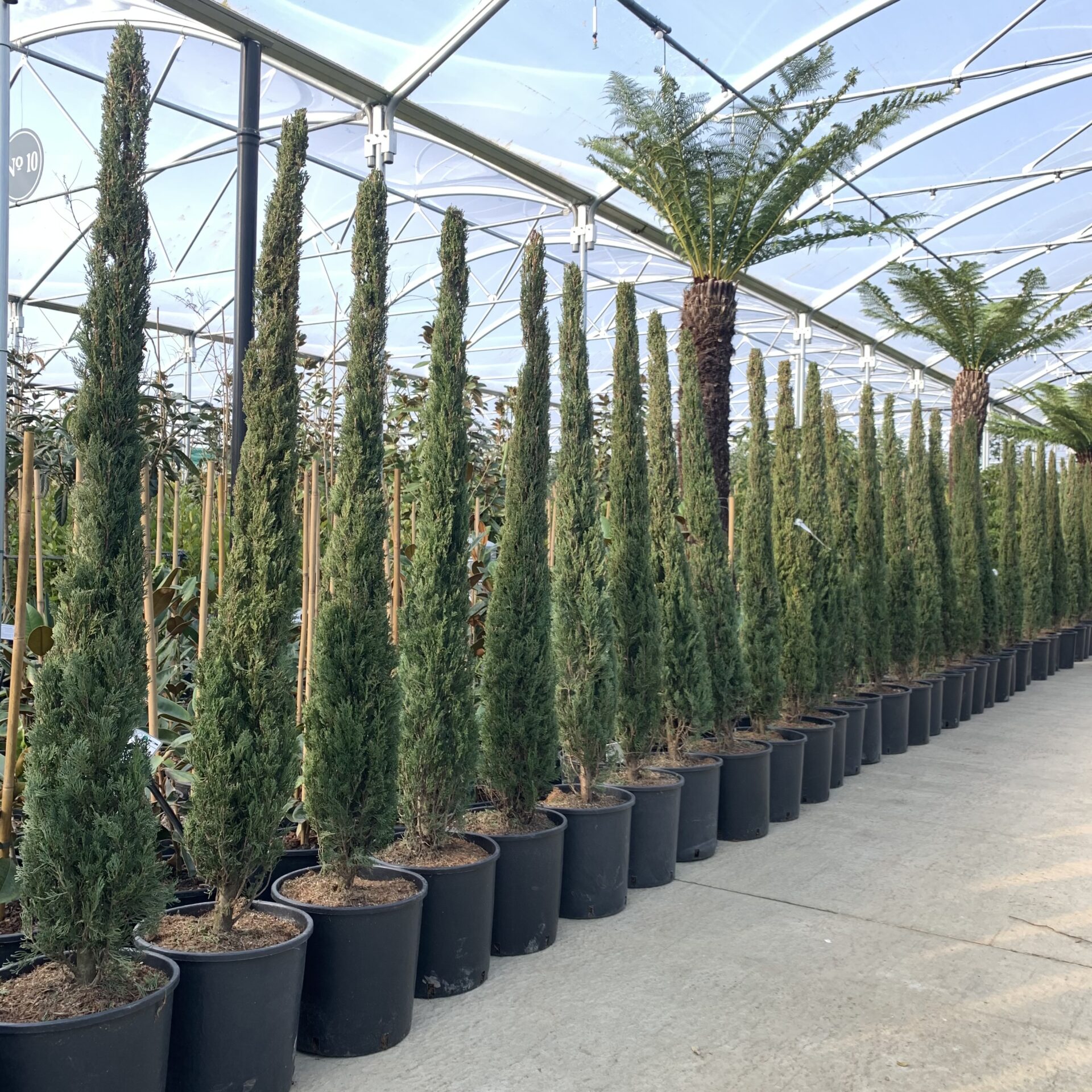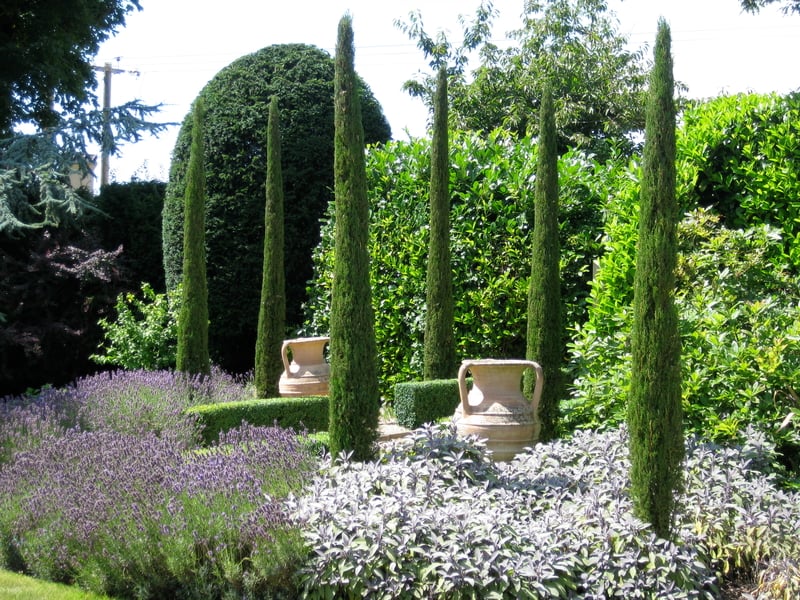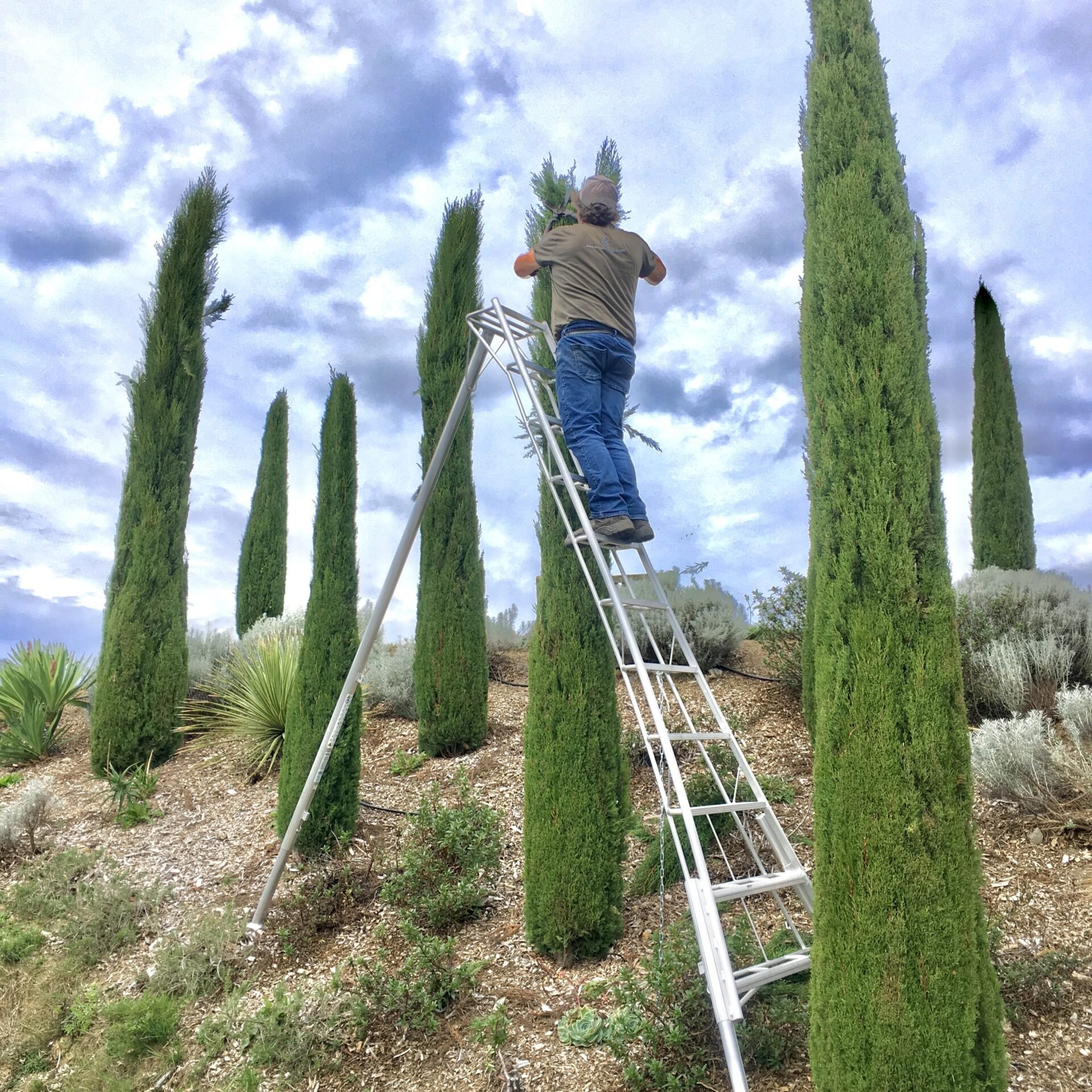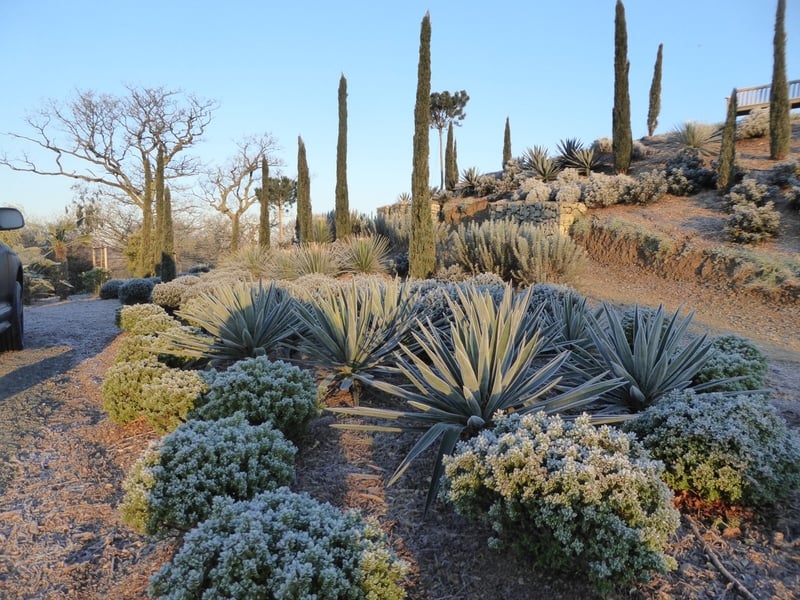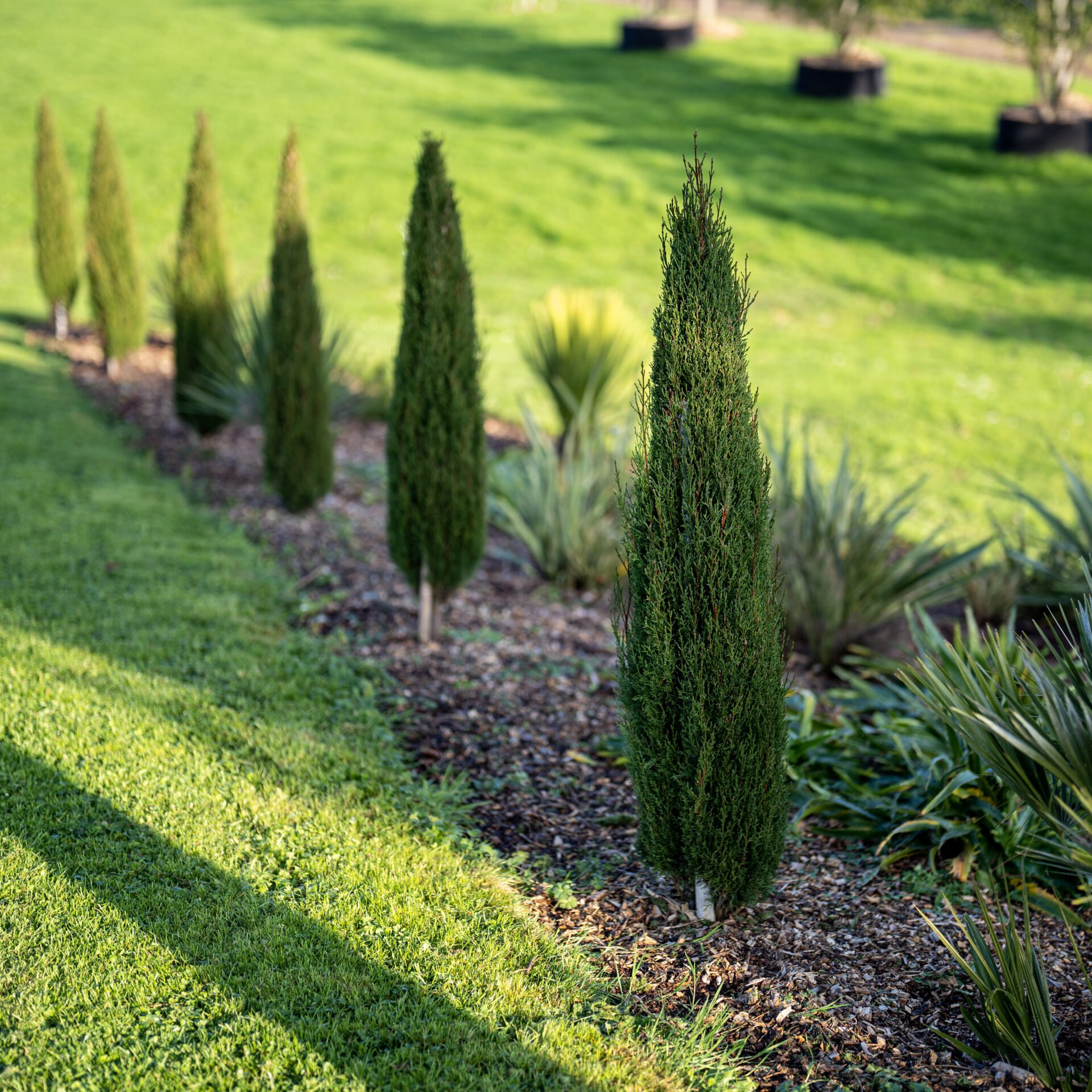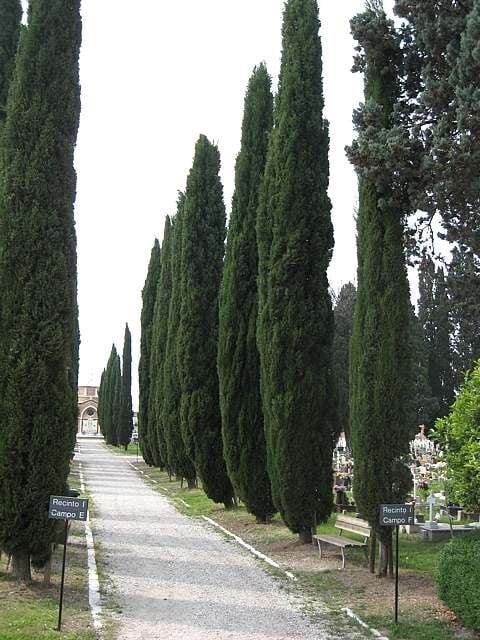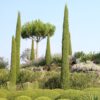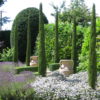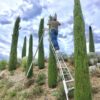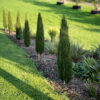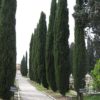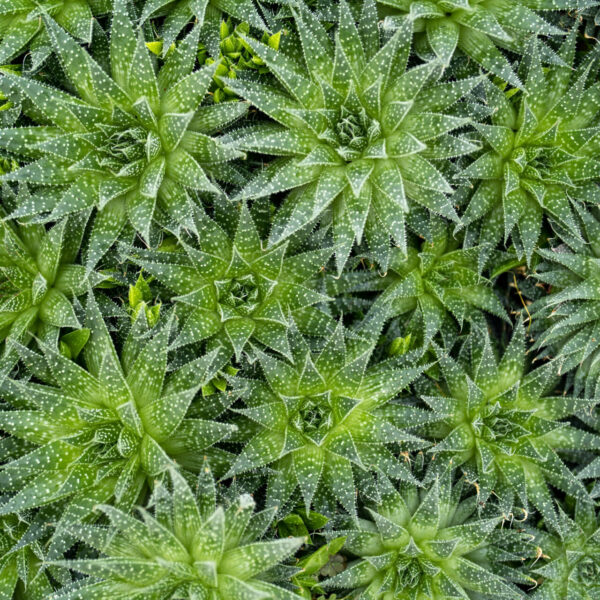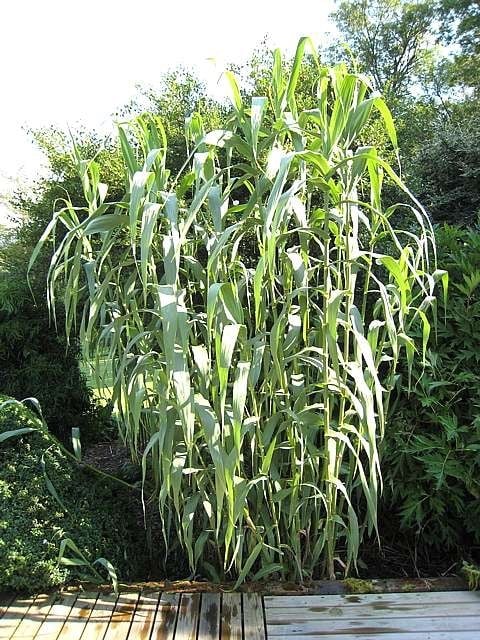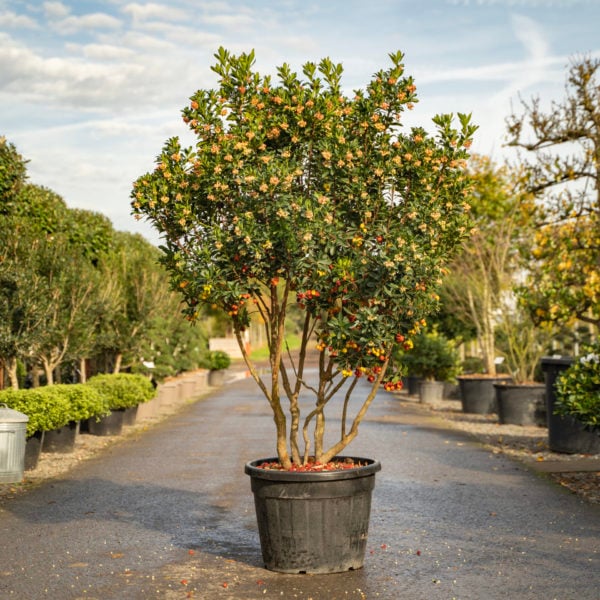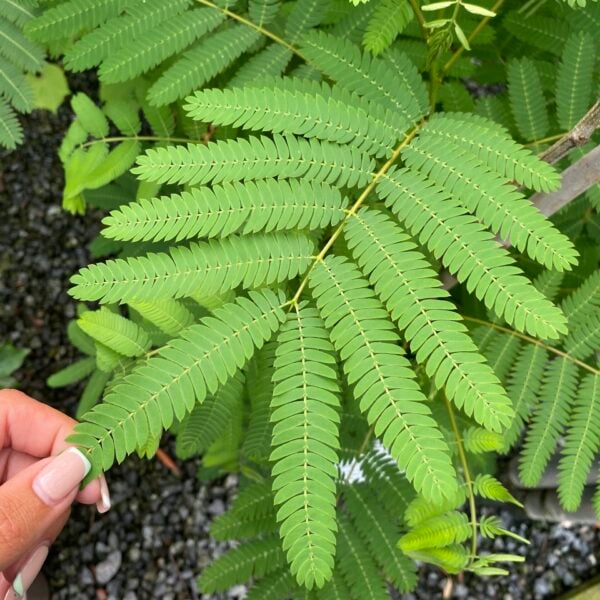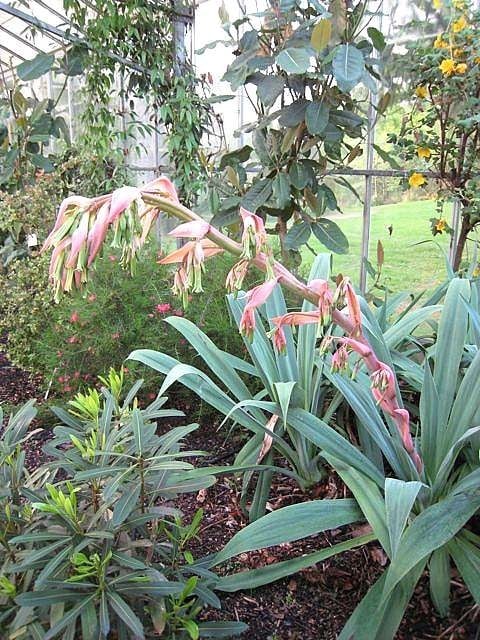Cupressus sempervirens ‘Pyramidalis’ (Italian Cypress)
Essence of Tuscany. Learn how to grow these and join a very exclusive club. Grown well, there’s nothing better, grown badly, there’s nothing worse. 20ft after 25 years. Please contact us for stock availability and sizes.

Hardiness level Green
If you've bought one of these it will already have been brought to your attention that they're a challenge. Get it right and there's nothing better, get it wrong and there's nothing worse. Learn how to grow these and you join an exclusive club. They can be grown on soggy old clay but they undoubtedly prefer sharp drainage - sandy or chalky. Plenty of space is important - they like light and good ventilation. Try to avoid using these trees in formal, symmetrical or geometric arrangements. However good you are at husbanding them, you'll loose one and spoil the arrangement. We like random groves at different sizes. Lose one and no one would ever know. They like our climate a bit too much and grow so vigorously that the branches flop, spoiling the perpendicular profile for which they're famous. How to deal with this?
They need clipping to keep the shape. The more you clip them, the better they look, the denser they get and if it snows (snow can make a right mess of these), the foliage is so tight, the snow can't settle on the branches. Like all their relatives (closely related to the dreaded Leylandii), they are prey to air born fungal attack. They evolved in dry climates with hot summers and are ill equipped to deal with fungal attacks. Any die-back (nearly always the result of fungi) needs cutting out and must be burnt or disposed of. This may leave a mighty void in the foliage but it must be done and nature abhors a vacuum so the hole will fill with new foliage rapidly. Occasionally, they'll get an attack of aphids which drip the sticky excretion on the lower branches and another airborne fungus called Sooty Mould settles upon the lower branches and the foliage looks black. Not much you can do about that. Just put it down to bad luck, encourage the ladybirds (they feed on aphids) and wait for the new growth next year. Still want one?
There are a fantastic number of these plants growing in Britain that look really dreadful. Never clipped, bent, half dead, shapeless and utterly pointless. Horrible, horrible, horrible. I never wanted anything that looked like that in my nursery. I first visited the Italian nurseries in Tuscany in 1990 and was pleased and intrigued to see all the Cupressus on the nurseries - straight, perfect and utterly seductive. I'd always assumed it was the climate or the food or the wine or something but the lesson I was about to be given was surprising. I was walking with Vannino - who we still do business with 26 years later - and asked him in my crappy Italian "perche sono le vostro piante como soldati?" (why do your plants look like soldiers?). He didn't stop walking, he said nothing but he gestured with his hands, clipping with shears. Well blow me down. I had no idea. It turns out that clipping Cupressus in Tuscany when they're young and vigorous is so deeply entrenched in their gardening culture that they never really bother to tell anyone and it would seem that no one bothers to ask. It would be a bit like being told to buy a thing called a lawn mower if you're sold some grass seed. We started to experiment at home and it works. It really really works.
I'd like to be able to point you in the direction of some fine examples in Britain but apart from some nice ones visible in Lindfield (W. Sussex) High Street, at the risk of sounding conceited, you'd be hard pressed to find some as nice as the ones in our Little Italy Garden at the nursery. They were only planted in 2015 so, at the time of writing, are not as big as we'd like but they should serve as a great encouragement to any potential growers. This is a tree that stirs great passions.
This is an immensely variable tree. It will survive in very harsh climates and in Cyprus (for example) one will often see them used by farmers as windbreaks. They will have been grown from seed, primarily, to do a job. If you have a row of twenty Cypress grown from seed, every single one will be different. The form we have is grown in Italy and is called Cupressus sempervirens 'Pyramidalis'. Not sure why because it's not remotely like a pyramid but it's chosen for its narrowness and reliability. There are many other named forms - 'Green Pencil', 'Stricta' and 'Totem' spring to mind. All much of a muchness but we avoid the form called 'Totem'. Delicious looking but more expensive and less reliable in this country.
Propagated by cuttings or grafted.
N.B. When clipping several plants with the same tool, have a bucket containing a 5% bleach solution and swish your blades around for 30 seconds between plants to sterilise them. This will help avoid the chance of cross contamination of disease.
As with all woody plants, plant high, exposing as much of the taper at the base of the trunk as possible. Allowing soil to accumulate round the base of a tree can be fatal. Keep very well watered when first planted.
Additional Information |
|
|---|---|
| Soil Type | |
| Light | |
| Plant Type | |
| Continent of Origin | |
| Specialist Plants | |
| Tree Size | |
| Situation | Coastal, Mild City Gardens, Plants for Pots, Sheltered Garden |
| Hardiness | |






